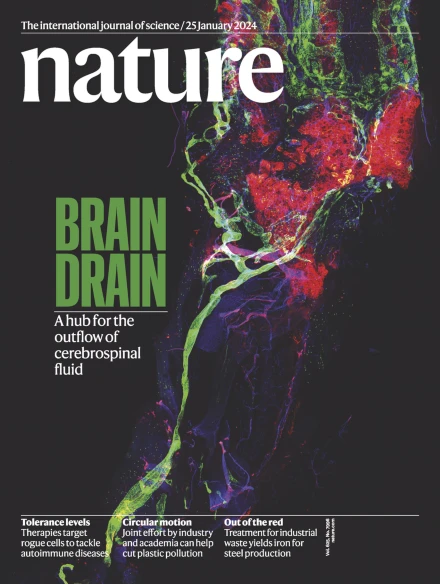Superheating gold beyond the predicted entropy catastrophe threshold
IF 48.5
1区 综合性期刊
Q1 MULTIDISCIPLINARY SCIENCES
引用次数: 0
Abstract
In their landmark study1, Fecht and Johnson unveiled a phenomenon that they termed the ‘entropy catastrophe’, a critical point where the entropy of superheated crystals equates to that of their liquid counterparts. This point marks the uppermost stability boundary for solids at temperatures typically around three times their melting point. Despite the theoretical prediction of this ultimate stability threshold, its practical exploration has been prevented by numerous intermediate destabilizing events, colloquially known as a hierarchy of catastrophes2–5, which occur at far lower temperatures. Here we experimentally test this limit under ultrafast heating conditions, directly tracking the lattice temperature by using high-resolution inelastic X-ray scattering. Our gold samples are heated to temperatures over 14 times their melting point while retaining their crystalline structure, far surpassing the predicted threshold and suggesting a substantially higher or potentially no limit for superheating. We point to the inability of our samples to expand on these very short timescales as an important difference from previous estimates. These observations provide insights into the dynamics of melting under extreme conditions. Gold samples can be heated to more than 14 times their melting point while retaining their crystalline structure, far surpassing the predicted entropy catastrophe threshold and suggesting a substantially higher or potentially no limit for superheating.

过热的黄金超过了预测的熵突变阈值
在他们里程碑式的研究中,费希特和约翰逊揭示了一种被他们称为“熵变”的现象,即过热晶体的熵与液体晶体的熵相等的临界点。这一点标志着固体在其熔点的三倍左右的温度下的最高稳定边界。尽管理论上预测了这个最终的稳定阈值,但它的实际探索却受到许多中间不稳定事件的阻碍,这些事件通常被称为灾难等级2 - 5,它们发生在远较低的温度下。在这里,我们在超快加热条件下实验测试了这一极限,通过使用高分辨率非弹性x射线散射直接跟踪晶格温度。我们的金样品被加热到超过熔点14倍的温度,同时保持其晶体结构,远远超过预测的阈值,并表明过热的限制大大提高或可能没有限制。我们指出,我们的样本无法在这些非常短的时间尺度上扩展,这是与以前估计的一个重要区别。这些观测提供了对极端条件下融化动力学的见解。金样品可以加热到熔点的14倍以上,同时保持其晶体结构,远远超过预测的熵突变阈值,表明过热的限制大大提高或可能没有限制。
本文章由计算机程序翻译,如有差异,请以英文原文为准。
求助全文
约1分钟内获得全文
求助全文
来源期刊

Nature
综合性期刊-综合性期刊
CiteScore
90.00
自引率
1.20%
发文量
3652
审稿时长
3 months
期刊介绍:
Nature is a prestigious international journal that publishes peer-reviewed research in various scientific and technological fields. The selection of articles is based on criteria such as originality, importance, interdisciplinary relevance, timeliness, accessibility, elegance, and surprising conclusions. In addition to showcasing significant scientific advances, Nature delivers rapid, authoritative, insightful news, and interpretation of current and upcoming trends impacting science, scientists, and the broader public. The journal serves a dual purpose: firstly, to promptly share noteworthy scientific advances and foster discussions among scientists, and secondly, to ensure the swift dissemination of scientific results globally, emphasizing their significance for knowledge, culture, and daily life.
 求助内容:
求助内容: 应助结果提醒方式:
应助结果提醒方式:


